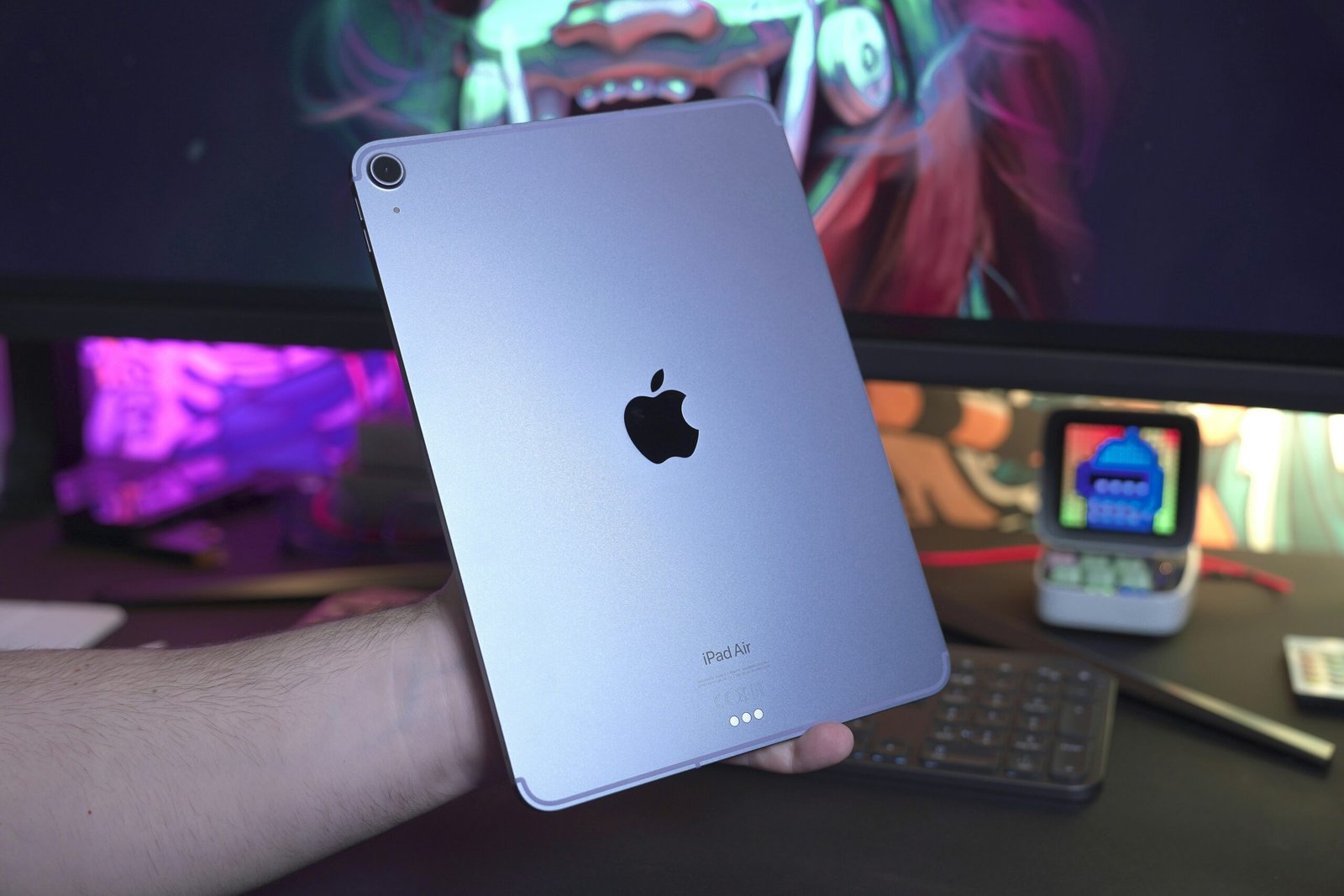Introduction
The landscape of tablet technology is continuously evolving, driven by relentless innovation and the quest for enhanced user experiences. A significant development on the horizon is Lenovo’s potential new product, set to revolutionize the market in 2025. Lenovo is expected to introduce a tablet featuring a slidable display, a groundbreaking technology supplied by Samsung. This anticipated launch underscores the dynamic nature of the tech industry and its commitment to pushing the boundaries of what is possible.
The introduction of a slidable display marks a significant leap in display technology, offering flexibility and adaptability that traditional screens cannot match. This innovation aligns with the growing consumer demand for versatile, multifunctional devices that can seamlessly transition between different use cases. By integrating Samsung’s state-of-the-art slidable display, Lenovo aims to redefine the user experience, providing a more immersive and adaptable interface.
Such advancements are not just about hardware improvements; they represent a broader trend towards creating devices that can cater to the diverse and ever-changing needs of users. This potential game-changer from Lenovo could set new standards in the tablet market, influencing design trends and technological benchmarks for years to come. As we look forward to 2025, this development highlights the ongoing evolution of tablet technology and its potential to transform how we interact with digital content.
The Evolution of Tablet Displays
The journey of tablet display technologies has been marked by significant advancements, beginning with the early models that utilized Liquid Crystal Display (LCD) technology. When the first mainstream tablets hit the market, LCD screens were the norm, offering adequate resolution and brightness for basic tasks. However, as consumer demand for higher resolution and better color accuracy grew, manufacturers began to explore more advanced options.
The transition from LCD to Organic Light Emitting Diode (OLED) displays marked a pivotal point in the evolution of tablet screens. OLED technology brought about numerous benefits, including richer colors, deeper blacks, and improved energy efficiency. This shift allowed for more immersive viewing experiences, which became particularly important as tablets began to be used for a wider range of activities, from media consumption to professional graphic design.
High-definition screen technologies have continued to evolve, introducing innovations such as Retina displays and AMOLED screens. These advancements have pushed the boundaries of screen resolution, brightness, and color accuracy, meeting the ever-increasing expectations of users. Tablets with high-definition screens have become essential tools for both personal and professional use, highlighting the importance of continuous innovation in display technology.
The introduction of foldable displays marked another significant milestone. These displays, made possible through flexible OLED technology, allowed tablets to transform into different form factors, offering unprecedented versatility. Foldable tablets could be compact for portability and then unfolded to provide a larger screen when needed, revolutionizing the way users interact with their devices.
As we look toward the future, the advent of slidable displays promises to be the next groundbreaking innovation. Slidable screens, expected to be supplied by Samsung for Lenovo’s upcoming tablet in 2025, represent a new frontier in display technology. These screens offer the potential for even greater flexibility and adaptability, further enhancing the user experience and expanding the possibilities for tablet use.
Partnership Between Lenovo and Samsung
The strategic partnership between Lenovo and Samsung signifies a pivotal moment in the tech industry, combining Lenovo’s innovation in computing with Samsung’s expertise in display technology. Historically, both companies have had successful collaborations in various capacities, though this current endeavor marks a significant leap forward. Samsung, renowned for its cutting-edge display technology, is set to supply slidable displays for Lenovo’s anticipated 2025 tablet, potentially revolutionizing the tablet market.
Lenovo has consistently pushed the boundaries in the computing world, innovating across laptops, desktops, and tablets. Their commitment to delivering high-performance devices is well-documented, making them a trusted name among consumers. On the other hand, Samsung’s prowess in display technology is unparalleled, with their OLED and AMOLED screens setting industry standards. This partnership allows Lenovo to leverage Samsung’s advanced display capabilities, integrating them into their own sophisticated hardware designs.
The implications of this collaboration are significant. For consumers, this means access to a new generation of tablets that combine Lenovo’s superior hardware with Samsung’s state-of-the-art slidable displays. The slidable display technology promises a more versatile and immersive user experience, potentially transforming how users interact with their tablets. This innovation could lead to more portable devices without sacrificing screen size, offering both convenience and enhanced functionality.
Additionally, this alliance highlights the strengths each company brings to the table. Lenovo’s robust hardware engineering and Samsung’s innovative display solutions create a synergy that could set new benchmarks in the tablet industry. This collaborative effort is expected to drive technological advancements, setting a precedent for future partnerships in the tech sector.
In conclusion, the partnership between Lenovo and Samsung is poised to deliver groundbreaking advancements in tablet technology. Consumers can look forward to a new era of devices that marry the best of both worlds, blending Lenovo’s engineering expertise with Samsung’s pioneering display technology. This collaboration not only benefits the two companies but also paves the way for future innovations in the industry.
Technical Specifications and Features
Lenovo’s upcoming tablet, slated for release in 2025, is poised to make waves in the tech industry with its innovative Samsung-supplied slidable display. The screen, a highlight of this device, is expected to feature a versatile size range that can be adjusted seamlessly for various tasks. When fully extended, the display could reach up to 12 inches, providing an expansive canvas for productivity and entertainment alike. The resolution is anticipated to be ultra-high definition (UHD), ensuring crisp and vibrant visuals, while the aspect ratio might dynamically adjust to suit the screen’s format, optimizing user experience.
In terms of hardware, the tablet is likely to house a state-of-the-art processor, possibly the latest Snapdragon or an equivalent, to handle the demanding tasks and applications expected to run on such a device. Coupled with substantial RAM—potentially up to 12GB—and storage options starting at 256GB, the tablet aims to cater to both power users and casual consumers. Battery life is another critical aspect, and Lenovo is expected to equip the tablet with a robust battery, possibly around 10,000mAh, to ensure extended usage without frequent recharges.
The integration of the slidable display introduces unique functionalities not seen in conventional tablets. Users might benefit from multi-window capabilities, allowing simultaneous operation of multiple apps in different screen segments. Additionally, the slidable nature of the screen could enhance productivity tools, enabling more intuitive interactions such as expandable workspaces for graphic design or coding.
On the software front, Lenovo is expected to leverage a customized version of Android, optimized to take full advantage of the slidable display. This includes enhanced multitasking features, adaptive interfaces, and possibly even exclusive apps designed to utilize the unique hardware. Overall, the combination of cutting-edge display technology, powerful hardware, and tailored software solutions positions Lenovo’s 2025 tablet as a potential game-changer in the tablet market.
In the rapidly evolving landscape of tablet technology, slidable displays stand poised to revolutionize user experience across a myriad of applications. Leveraging the flexibility of Samsung-supplied slidable displays, Lenovo aims to deliver a versatile device that transcends traditional limitations. One of the most compelling use cases for slidable display technology lies in multitasking. Imagine a scenario where professionals can effortlessly expand their tablet screen to view multiple documents side-by-side, thereby enhancing productivity and operational efficiency. The ability to slide out additional screen space could also streamline workflows for coders, designers, and project managers who often juggle various applications simultaneously.
Gaming enthusiasts would similarly benefit from the dynamic capabilities of slidable displays. A broader, more immersive screen can elevate the gaming experience, offering a panoramic view that traditional static screens simply cannot match. This augmented display real estate can also support additional touch controls, thereby enriching gameplay and providing a competitive edge in fast-paced gaming environments. Enhanced graphical fidelity and expansive visuals could cater to both casual and hardcore gamers, making the tablet a versatile gaming platform.
Content creation is another domain where slidable displays could bring about significant improvements. For artists, photographers, and video editors, the expanded screen provides a more detailed canvas, facilitating intricate edits and high-resolution previews. The flexibility to adjust screen size can also accommodate various stages of the creative process, from initial sketches to final reviews. This adaptability can be particularly beneficial for professionals who require precise control over their work, fostering a more intuitive and efficient creative environment.
Media consumption, including streaming videos and reading e-books, stands to gain from the enhanced visual experience offered by slidable displays. Users can enjoy widescreen formats without the need for external monitors, making it easier to watch movies, follow tutorials, or read extensive documents. The adjustable screen size allows for a more customized viewing experience, appealing to a broad range of user demographics, from students to retirees.
In summary, Lenovo’s integration of Samsung-supplied slidable displays in its upcoming tablets promises to redefine user interaction across various sectors. Whether for multitasking, gaming, content creation, or media consumption, the innovative use cases for slidable displays portend a significant leap forward in tablet technology, offering unprecedented flexibility and enhanced user experience.
The introduction of Lenovo’s new tablet featuring a Samsung-supplied slidable display could significantly alter the competitive landscape of the tablet market. Currently, the market is dominated by industry giants such as Apple, Samsung, and Microsoft, each offering high-end devices with unique selling points. Apple’s iPad line remains unparalleled in terms of ecosystem integration and performance, while Samsung’s Galaxy Tab series has carved out a niche with its versatile use cases and advanced display technology, including foldable variants.
Lenovo’s entry into the realm of slidable displays presents an opportunity to differentiate itself by capitalizing on Samsung’s advanced display technology. Unlike foldable displays, which have faced challenges related to durability and user experience, slidable displays offer a more seamless transition between different screen sizes, potentially appealing to a broader range of consumers. This innovation could position Lenovo as a frontrunner in offering cutting-edge technology without the compromises seen in some foldable devices.
Market reception to Lenovo’s new tablet will likely hinge on several factors, including price, performance, and overall user experience. If Lenovo can offer a competitively priced device that leverages the unique advantages of a slidable display—such as enhanced multitasking capabilities and a larger screen in a compact form factor—it could attract both tech enthusiasts and mainstream consumers. Furthermore, Lenovo’s established reputation in the computing segment, particularly with its ThinkPad and Yoga series, could lend credibility and attract existing brand loyalists.
To capture consumer interest, Lenovo should focus on highlighting the practical benefits of a slidable display, such as its adaptability and durability. Effective marketing strategies will be crucial, emphasizing how this innovation enhances productivity and entertainment experiences. Additionally, strategic partnerships, perhaps with software developers to optimize applications for the slidable format, could further strengthen Lenovo’s position in the market.
In conclusion, Lenovo’s potential game-changer with a Samsung-supplied slidable display has the potential to disrupt the tablet market. By addressing current consumer pain points and differentiating its product through innovation and strategic positioning, Lenovo could emerge as a significant player in this highly competitive landscape.
Launching a tablet with a slidable display presents Lenovo with a constellation of challenges and considerations that span various domains, including technology, manufacturing, and supply chain logistics. The integration of a slidable display introduces a new level of technological complexity. This evolution demands advanced engineering to ensure seamless operation, involving precise calibration of the sliding mechanism to prevent any mechanical failures over time. Achieving this reliability is paramount to avoid compromising the user experience.
From a manufacturing perspective, the production of slidable displays requires specialized techniques and equipment. Lenovo will need to develop or acquire proprietary manufacturing processes to maintain high production standards and ensure consistency across units. These processes are often expensive and time-consuming to implement, potentially impacting the production timeline and overall cost of the tablet. Additionally, the integration of Samsung-supplied slidable displays necessitates a robust partnership between the two tech giants. Coordination will be key to addressing any unforeseen technical issues that may arise during the production phase.
The supply chain is another critical area of focus. Securing a steady supply of high-quality components is essential to meet market demand. Lenovo must navigate potential disruptions in the supply chain, whether due to geopolitical tensions, natural disasters, or other unforeseen events. Establishing multiple supply sources and maintaining strategic reserves of critical components can help mitigate these risks.
Durability and user experience are also significant concerns. Slidable displays, by their very nature, introduce moving parts that may be susceptible to wear and tear. Lenovo will need to conduct rigorous testing to ensure that the slidable mechanism can withstand daily use without degradation. The user experience must remain intuitive and fluid, with the sliding action integrating seamlessly into the tablet’s overall functionality.
Cost considerations cannot be overlooked. The advanced technology and specialized manufacturing processes required for slidable displays will likely result in higher production costs. Lenovo must balance these costs against market pricing to ensure the tablet remains competitively priced while still achieving profitability. Strategic pricing and possibly tiered product offerings could help broaden the device’s market appeal.
Conclusion and Future Outlook
In examining Lenovo’s anticipated release of a tablet with a Samsung-supplied slidable display expected in 2025, several pivotal points emerge. This innovative leap signifies a significant collaboration between two tech giants, leveraging Samsung’s advanced display technology in Lenovo’s versatile tablet offerings. The introduction of a slidable display could revolutionize user interaction, offering unprecedented flexibility and screen size adaptability, which are particularly appealing for both productivity and entertainment purposes.
The potential impact on the tech industry is substantial. Lenovo’s integration of this cutting-edge display technology could set a new benchmark in the tablet market, prompting competitors to explore similar innovations to stay relevant. This move may lead to a broader adoption of flexible display technologies across various devices, including smartphones and laptops, thereby enriching the overall user experience.
From a consumer standpoint, the introduction of a tablet with a slidable display promises to redefine expectations. Enhanced portability, coupled with the ability to expand the screen size on demand, caters to the growing need for multi-functional devices in a fast-paced world. This could attract a diverse range of users, from professionals seeking efficient multitasking tools to casual users looking for superior media consumption experiences.
Looking ahead, Lenovo’s pioneering approach could influence upcoming trends in tablet technology. We might witness further advancements such as improved durability of flexible displays, more energy-efficient designs, and seamless integration with other smart devices. Additionally, software development tailored to leverage the unique capabilities of slidable displays could emerge, offering new functionalities and applications that were previously unimaginable.
Overall, Lenovo’s forthcoming tablet with a Samsung-supplied slidable display marks a potentially transformative moment in the tech landscape. It not only highlights the innovative spirit driving the industry but also sets the stage for future technological breakthroughs that could reshape how we interact with our devices.




